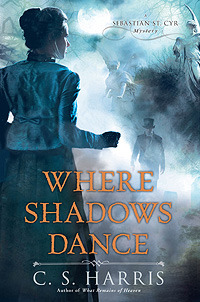 Nightwatch (Miranda Chase NTSB #12) by M L Buchman
Nightwatch (Miranda Chase NTSB #12) by M L Buchman Format: ebook
Source: author
Formats available: paperback, ebook
Genres: action adventure, political thriller, technothriller, thriller
Series: Miranda Chase NTSB #12
Pages: 370
Published by Buchman Bookworks on February 28, 2023
Purchasing Info: Author's Website, Amazon, Barnes & Noble, Kobo
Goodreads
As the Arctic melts, the fabled Northwest and Northeast Passages are opening. But are they opening to war?
A Chinese freighter attacked. A sabotaged passenger jet crashed in Quebec. And high overhead an E-4B Nightwatch, America’s fortress-in-the-sky, sees all.
With nations shifting to high alert, Miranda Chase lands once more in the midst of the fray. But first she must fight battles of her own. Can she conquer the emotional chaos her autism unleashes amid the loss of her past? In time to save her team? —And avert the disaster playing out under the Northern Lights?
A tale of high adventure, airplanes, and espionage.
"Miranda is utterly compelling!" - Booklist, starred review“Escape Rating: A. Five Stars! OMG just start with Drone and be prepared for a fantastic binge-read!” -Reading Reality
My Review:
The tragedy of the Northwest Passage in the 19th century was that it wasn’t there. It was so firmly believed that expedition after expedition sailed for the Arctic, determined to trace a route that would traverse the ocean north of Canada and cut shipping time between Europe and Asia. Many explorers gave their lives in search of a route that did not exist, or in search of others whose lives had already been lost in that search.
Fast forward to the 21st century, when Nightwatch takes place. Today, the tragedy of the Northwest Passage is that it IS there.That once-impenetrable passage opened to ships without the need of an icebreaker late in the summer of 2007. Its mirror-image, the Northeast Passage (AKA Northern Sea Route) in the Arctic waters off the Russian coast, opened in 2009. From an ecological standpoint, this is a tragedy. Climate change is melting the polar ice pack. The predictions of where all that water will end up is currently the stuff of disaster movies, but coastlines will be under threat in the decades to come.
But every cloud is supposed to have a silver lining – in this story it’s a silver lining that seems to contain yet another cloud within it.
With the ice pack in retreat, regularly scheduled commercial shipping over these Northern routes will be increasingly viable, and therefore profitable, shortcuts for freight shipments around the world. Cargo shippers will be thrilled at cutting miles, fuel costs, time, and personnel costs for all of their goods.
But someone’s ox is about to get gored. It is inevitable in the long run, but in the short run they have a shot at staving off that evil day. All they have to do is make the experimental attempts at northerly freight routes seem dangerous, or unlucky, or if the saboteurs are lucky – even both.
They’re not. No plan survives contact with Miranda Chase – not even a plan involving container barges and submarines. Particularly not after one of those subs takes a potshot at the plane she’s flying in.
 Escape Rating A+: I’ve been a fan of Miranda Chase from her very first investigation in Drone. While her team has gotten bigger – and scattered a bit – and the stakes in her investigations have gotten considerably higher – this series is consistently among my favorite reads. This twelfth entry in the series absolutely continues that streak of winners.
Escape Rating A+: I’ve been a fan of Miranda Chase from her very first investigation in Drone. While her team has gotten bigger – and scattered a bit – and the stakes in her investigations have gotten considerably higher – this series is consistently among my favorite reads. This twelfth entry in the series absolutely continues that streak of winners.
This one begins in three places – which is entirely fitting as it has three tracks that eventually crash into one. Nearly literally.
A Chinese container ship is in the midst of navigating that Northeast Passage, heading for a record breaking run and a promotion for its captain, when it is forced to drop speed and sacrifice that record because one of its screws (read as propellers sorta/kinda) has developed a fault.
Actually, it’s been encouraged to fail by a missile launched from a mysterious, and mysteriously nearby, submarine.
On practically the other side of the world, near Knowlton, Quebec, Miranda’s friends and teammates Jeremy and Taz are investigating the crash of a small passenger jet that seems to have been sabotaged – by one of its passengers. Who was himself sabotaged, and just so happens to be a high-level agent for the CIA.
While Miranda and her completely stressed out partner Andi Wu are on their way to SEATAC to pick up Andi’s high powered and highly stressFUL mother – at least from Andi’s point of view. Andi’s certain that her mother is still disappointed in her for choosing a military career instead of the legal one that her family had all planned out for her.
The cargo ship’s captain and his crew are all alive but he’s rightfully concerned about the reception he’ll receive from his superiors when he finally reaches port.
Taz is both frustrated and peeved because she’s a fan of mystery fiction in general and Louise Penny’s marvelous Chief Inspector Gamache in particular. (As am I) Jeremy doesn’t understand just how badly she wants to visit all of the local sites dedicated to her favorite detective. But the more she and Jeremy dig into this crash, the less likely it is that she’ll have any time to be a tourist.
While Miranda and Andi fly back to Spieden Island with Andi’s mother Ching Wui simmering in the passenger compartment – only to see that the entire island is on fire. Miranda’s home, her private hangar, her vintage airplanes, all her mementos of her life’s journey so far – all are lost. She panics and nearly crashes the plane she’s flying in her extreme distress.
From these three very disparate starts a compelling, page-turning, supercharged story emerges. The injured CIA agent and the dead passengers lead Miranda and her team to multiple plots from the ouster of the current – and always nefarious – head of the agency to that no-longer-speeding cargo ship to a plot to scuttle a high level conference at the edge of the Arctic to discuss – you guessed it – the potential for using that Northern Sea Route in order to get around the long transit times and ever increasing prices of traversing either the Panama or Suez Canals.
But as much as this investigation turns out to be about following the money – tensions are so high that multiple countries are on the brink of war. It’s up to Miranda and her team, with a whole lot of help from her friends, allies and even one or two downright frenemies, to put all the pieces together before it’s too late.
 Miranda Chase always delivers. Nightwatch is yet another compulsively readable chapter in her ongoing adventures! I’m already looking forward to her next investigation.
Miranda Chase always delivers. Nightwatch is yet another compulsively readable chapter in her ongoing adventures! I’m already looking forward to her next investigation.
One final note, as much as I love the Miranda Chase series, it added just that little something extra that Taz’ part of the story was a bit of a love letter – or at least a bit of fannish appreciation – towards Louise Penny’s Chief Inspector Gamache series. Her part of the story isn’t just set in Gamache’s stomping grounds, but several of the characters, including Taz herself, are big fans of Gamache’s as will be many of the story’s readers. (For those like Jeremy who are not familiar with the Chief Inspector, the series begins with Still Life and it is marvelous and thoughtful and just a terrific set of beautiful mysteries. Just don’t judge the books by either its TV series or its movie.)

 The London Séance Society by
The London Séance Society by  Escape Rating A: I picked up The London Séance Society because I enjoyed the author’s debut novel,
Escape Rating A: I picked up The London Séance Society because I enjoyed the author’s debut novel, 


 Current Giveaways:
Current Giveaways: Blog Recap:
Blog Recap: Coming This Week:
Coming This Week:

















 Where Shadows Dance (Sebastian St. Cyr, #6) by
Where Shadows Dance (Sebastian St. Cyr, #6) by  I was hooked back in 2005, and devoured the first five books in the series as they were published. Until, as so many things do, the series got caught up in the black hole of “so many books, so little time” and I stopped following until I was asked to
I was hooked back in 2005, and devoured the first five books in the series as they were published. Until, as so many things do, the series got caught up in the black hole of “so many books, so little time” and I stopped following until I was asked to  And I love the way the known historical conflicts of the time, both in government in England and in the wider world, are neither ignored nor brushed aside but instead inform every aspect of the mystery and give it depth and substance. All while a murder is committed, the crime is investigated, and evil gets its just desserts even as the story acknowledges that there are plenty of other – and often worse – evils afoot in that wider world that Devlin has yet to deal with. If he can.
And I love the way the known historical conflicts of the time, both in government in England and in the wider world, are neither ignored nor brushed aside but instead inform every aspect of the mystery and give it depth and substance. All while a murder is committed, the crime is investigated, and evil gets its just desserts even as the story acknowledges that there are plenty of other – and often worse – evils afoot in that wider world that Devlin has yet to deal with. If he can. Full Exposure: A Novel by
Full Exposure: A Novel by  In Spencer’s case it’s his sometimes intrusive but always loving family and the New Orleans Vietnamese community of which they are an integral part. In Josie’s case it’s her best friends, the Boss Babes, who are with her through thick and thin and crisis and resolution and everything in between.
In Spencer’s case it’s his sometimes intrusive but always loving family and the New Orleans Vietnamese community of which they are an integral part. In Josie’s case it’s her best friends, the Boss Babes, who are with her through thick and thin and crisis and resolution and everything in between. The Weight of Command by
The Weight of Command by  Escape Rating A: This is not exactly the first time this scenario has been done. (There are at least SIX different variations of it in the
Escape Rating A: This is not exactly the first time this scenario has been done. (There are at least SIX different variations of it in the  I picked up The Weight of Command because I adored the author’s previous work, especially his
I picked up The Weight of Command because I adored the author’s previous work, especially his  The Magician's Daughter by
The Magician's Daughter by  As of the writing of this post, Jimmy Carter is at
As of the writing of this post, Jimmy Carter is at 
 Current Giveaways:
Current Giveaways: Blog Recap:
Blog Recap: Coming This Week:
Coming This Week: